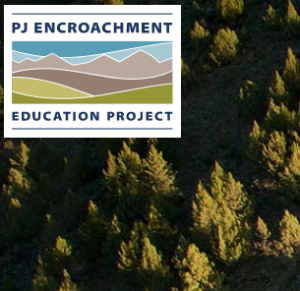Fuels & Fuel Treatments
View article.
In general, we find that treating near housing units can provide the greatest level of protection relative to treating more remote wildlands to reduce transmission potential. Treating on federal lands to reduce federal transmission was highly effective at reducing exposure from federal fires and at expanding opportunities for beneficial fire but contributed comparatively little to reducing housing exposure from all fires. We find that treatment extents as low as 2.5–5% can yield significant benefits with spatially optimized strategies, whereas the random strategy did not perform comparably until reaching a much larger treatment extent. Increasing risk tolerance for housing exposure expanded the area suitable for managed fire, while decreasing risk tolerance for beneficial fire opportunity and flame length probability shrunk the area suitable for managed fire.
View article.
Most studies find that fuel treatments are not financially viable for land management agencies based on revenue generated from forest products, biomass, or carbon credits at the time of implementation. Fuel treatments also tend to not be financially viable based on future management costs savings (fire suppression and rehabilitation costs) or averted losses in forest products from wildfire over the lifespan of treatment effectiveness. Similarly, most studies that consider benefits beyond those accruing to land management agencies find that the benefits from any single category (e.g., damage to structures and infrastructure, critical watersheds, air quality, or ecosystem values) are not sufficient to offset treatment costs. Overall, the recent literature suggests that fuel treatment projects are more likely to have benefits that exceed costs if they generate benefits in multiple categories simultaneously. The literature also documents tremendous variability in benefits and costs across regions and between projects within regions, which poses a challenge to reaching general conclusions about the benefits and costs of fuel treatments at programmatic scales, and suggests that practitioners should proceed with caution when trying to extrapolate the benefits and costs for a prospective fuel treatment project from estimates reported in the previous literature.
View article.
In this Research-Partnership Highlight, we argue that private-public partners in such settings must be strategic in their selection of tasks to generate “small wins” in order to build the trust, competency, and legitimacy needed to advance an approach for landscape-scale fine fuels management. We highlight a fine fuels reduction partnership consisting of public and private entities in southeastern Oregon that established a research and education project and applied dormant season grazing on three pastures within the Vale District Bureau of Land Management. We describe the impetus for the partnership, antecedents, strategic tactics, and ongoing learning and reflection used to revise processes. In this example, implementing dormant season grazing as a research and education project allowed the partners to assess the efficaciousness of the treatment, as well as the operational logistics and administrative competencies necessary to apply the treatment to manage fine fuels at broader scales. Because dormant season grazing may, in some instances, conflict with established practices and norms, small-scale projects such as this allow partners to refine understandings of the social and administrative conditions that make implementation possible. Generating small wins through projects such as this is a critical precursor for partnerships seeking to take on larger, more complex endeavors that involve increasing ecological, economic, and social uncertainty.
View article.
Forest biological disturbance agents (BDAs) are insects, pathogens, and parasitic plants that affect tree decline, mortality, and forest ecosystems processes. BDAs are commonly thought to increase the likelihood and severity of fire by converting live standing trees to more flammable, dead and downed fuel. However, recent research indicates that BDAs do not necessarily increase, and can reduce, the likelihood or severity of fire. This has led to confusion regarding the role of BDAs in influencing fuels and fire in fire-prone western United States forests. Here, we review the existing literature on BDAs and their effects on fuels and fire in the western US and develop a conceptual framework to better understand the complex relationships between BDAs, fuels and fire. We ask: 1) What are the major BDA groups in western US forests that affect fuels? and 2) How do BDA-affected fuels influence fire risk and outcomes? The conceptual framework is rooted in the spatiotemporal aspects of BDA life histories, which drive forest impacts, fuel characteristics and if ignited, fire outcomes. Life histories vary among BDAs from episodic, landscape-scale outbreaks (bark beetles, defoliators), to chronic, localized disturbance effects (dwarf mistletoes, root rots). Generally, BDAs convert aboveground live biomass to dead biomass, decreasing canopy fuels and increasing surface fuels. However, the rate of conversion varies with time-since-event and among BDAs and forest types, resulting in a wide range of effects on the amount of dead fuels at any given time and place, which interacts with the structure and composition of the stand before and subsequent to BDA events. A major influence on fuels may be that BDAs have emerged as dominant agents of forest heterogeneity creation. Because BDAs play complex roles in fuels and fire heterogeneity across the western US which are further complicated by interactions with climate change, drought, and forest management (fire suppression), their impacts on fuels, fire and ecological consequences cannot be categorized simply as positive or negative but need to be evaluated within the context of BDA life histories and ecosystem dynamics.
View article.
We found that many community members were initially drawn to learn about wildfre risk mitigation, but their informational needs shifted toward broader forest ecology over time, suggesting that communication strategies and topics must also evolve over time. Some common terms used by land management professionals were unclear to public audiences, sometimes leading to feelings of dissatisfaction with outreach. One-on-one meetings and experiential group learning were perceived by information providers and community members to be useful strategies for outreach. Our fndings can be used to improve ongoing outreach in this study area and inform similar efforts elsewhere.
View brief.
Past practices, such as fire suppression, have created densely packed forests with an overabundance of woody vegetation. Live or dead, this vegetation can fuel severe wildfire. Overcrowded growing conditions also prevent trees and other plants from obtaining sufficient nutrients, light, or water to bounce back and remain healthy following a stressful event. The warming climate further stresses vegetation and can foster tinderbox conditions on the landscape, especially under widespread persistent drought.
View brief.
The Wildfire Crisis Strategy calls for ramping up forest treatments on Federal, State, Tribal, and private lands well above current levels. Public and stakeholder engagement, consultation, and collaboration are critical to successful implementation of the strategy. Best available science can inform how to improve the way we engage with communities and help us collectively determine the right treatment locations and tools.
Visit the website.
Around the world, woodlands and forests are replacing native grasslands and shrublands which impacts wildlife and people. In the sagebrush biome of the American West, pinyon pine, juniper, and other native conifer trees are expanding into imperiled shrublands. Learn more about the implications of this woodland encroachment and what communities are doing to restore healthy and resilient shrublands.
Webinar recordings.
- Monday, November 14 SCIENCE x Forests: Silviculture for the present and future
A compendium of silviculture treatments for forest types in the United States: Silviculture guidance to support modeling, scenario planning, and large-scale simulations, presented by Thomas Schuler
Prescribed burning considerations following mechanical treatments, presented by Sharon Hood
Reforestation in an era of megafires: A wicked problem for the Forest Service in Region 5 and elsewhere, presented by Martin Ritchie - Tuesday, November 15 SCIENCE x Forests: Forests and climate change
Preparing our forests for the future, presented by Mike Battaglia
The Pacific Northwest carbon dynamics research initiative: Co-production to assist land managers and policy makers, presented by Andrew Gray
Sink, swim, or surf: Surging climate change impacts and the role of climate-adaptive silviculture, presented by Alejandro Royo - Wednesday, November 16 SCIENCE x Forests: Innovations in forest research
From the forest to the faucet: Tools and data linking surface water from forested lands to public water systems, presented by Peter Caldwell
Cloud computing advances regional old-growth forest monitoring for the Northwest Forest Plan, presented by David M Bell
What is resilience in frequent-fire forests and how can it be measured?, presented by Malcolm North - Thursday, November 17 SCIENCE x Forests: Urban forestry, community, and wood utilization
The science and practice of urban silviculture, presented by Nancy Sonti and Rich Hallett
Expanding urban wood utilization, presented by Charlie Becker
Not by trees alone: Centering community in urban forestry, presented by Lindsay Campbell - Friday, November 18 SCIENCE x Forests: Invasion and outbreaks in forests
Species home-making in ecosystems: Toward place-based ecological metrics of belonging, presented by Susan Cordell
Invasion and outbreak within an epidemiological model, presented by Rima Lucardi
Mapping Armillaria-killed trees with high-resolution remote sensing, presented by Benjamin Bright
View article.
Cows were fitted with VF collars (calves not collared) that use Global Positioning System positioning to contain cattle inside fuel break boundaries and record animal locations at 5-min intervals. End-of-trial forage utilization was 48.5% ± 3.7% and 5.5% ± 0.7% for areas inside and outside of the fuel break, respectively. Daily percentage of cattle locations inside the fuel break was initially > 94% but declined to approximately 75% by the end of the trial. Percentage daily locations of dry cows and cow/calf pairs inside the fuel break was 98.5% ± 0.5% and 80.6% ± 1.1%, respectively (P < 0.001). Our data suggest virtual fencing can be a highly effective method of concentrating grazing to reduce herbaceous fuel biomass within linear fuel breaks. Efficacy of this method could be substantially impacted by use of dry versus cow/calf pairs.






